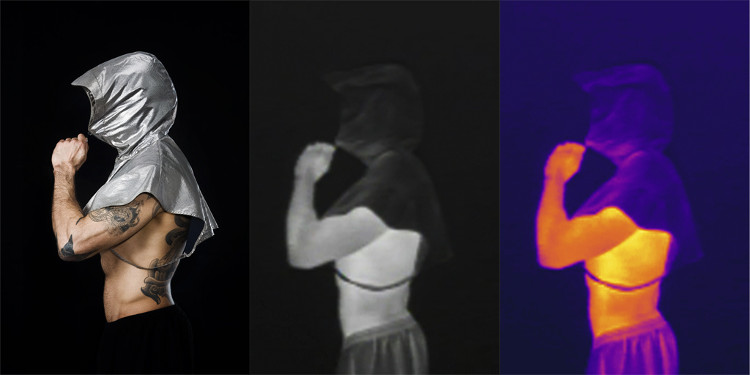Camouflage vs CCTV
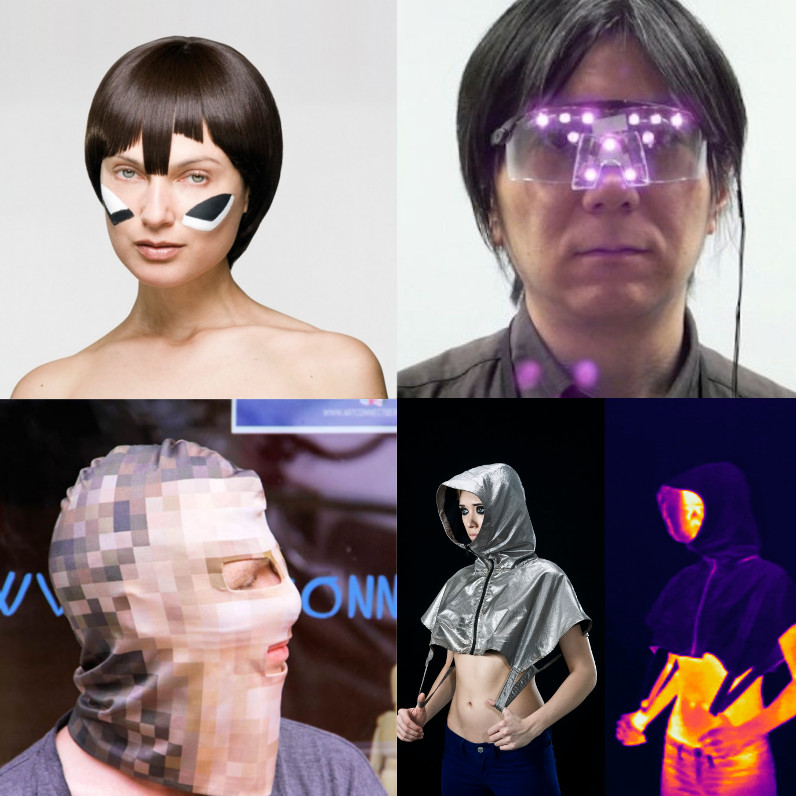
Now in large cities there are practically no places left outside the field of view of one or several cameras - police and municipal cameras in the streets and squares, private video surveillance systems in stores and cafes, car DVRs, smartphones cameras, and soon Google Glass, and others such gadgets - often in our direction several lenses can look at the same time. Add to this the face recognition features in social networks and advanced video analytics systems like this - and it turns out that almost every step we take is recorded and analyzed.
Each action gives rise to opposition, and recently, one after another, projects began to appear, the purpose of which is to protect themselves from the "all-seeing eye" or at least draw public attention to the problem of total observation.
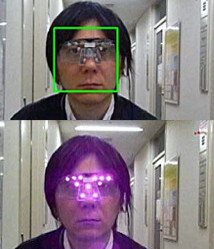 Isao Etizen, professor at the Tokyo National Institute of Informatics, and Seiichi Goshi, professor at Tokyo Kogakuin University of Technology, suggest wearing glasses that have infrared LEDs. Their light is invisible to the eyes, but the vast majority of cameras are quite sensitive in the near infrared range. The included LEDs greatly complicate face recognition or even turn it into a blurry spot of light.
Isao Etizen, professor at the Tokyo National Institute of Informatics, and Seiichi Goshi, professor at Tokyo Kogakuin University of Technology, suggest wearing glasses that have infrared LEDs. Their light is invisible to the eyes, but the vast majority of cameras are quite sensitive in the near infrared range. The included LEDs greatly complicate face recognition or even turn it into a blurry spot of light. The prototype demonstrated by the Japanese looks rather clumsy, but if you use enough miniature LEDs and a battery that can be placed directly in the frame, the glasses will look no different from ordinary ones. However, someone may even like such a brutal appearance (here, for example, he ).
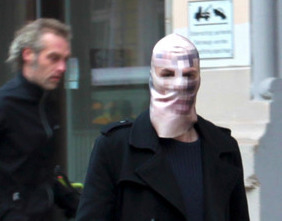
The project of the German artist and designer Martin Bakes, working at the junction of high technology and art, is called Pixelhead . This is a balaclava with a pattern in the form of a pixelated image of a human head. The project is primarily symbolic and political rather than practical - the basis of the pattern is a photograph of the German Minister of the Interior, Hans-Peter Frederick, known for his paranoid attitude to the Internet and the desire to strengthen control and expand the powers of the government to monitor citizens.
Perhaps the most serious approach to the matter was New York artist and hacker Adam Harvey in his CV Dazzle project.. Using the OpenCV library and scripts in Java and Processing, he picked up several hairstyle and makeup options that greatly complicate the work of face recognition algorithms. He used sharp contrasting lines and spots that either cut the face into pieces, or create “false targets” for the algorithms.
The result looks extravagant, but in large cities, where new youth subcultures regularly appear and disappear, few people will be surprised by this. If wearing a mask covering the face in public places too clearly shows a desire to disguise itself, and in some cases even illegally , then it is almost impossible to make any claims to the owner of such makeup.
Adam Harvey borrowed the idea of such disguise from the military. Similar contrast camouflageIt was used during the First World War - wide black-and-white stripes literally "broke" the silhouettes of warships, not allowing to correctly determine their type, size and orientation.

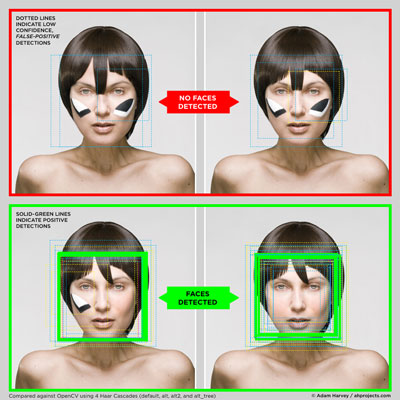
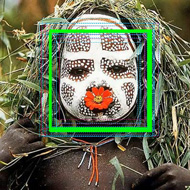 Photos of models camouflaged using the CV Dazzle technique are not recognized by most popular web services that can mark faces in photographs. One of the demos shows how the PhotoTagger tool could not detect a single face in 14 portraits uploaded to Facebook.
Photos of models camouflaged using the CV Dazzle technique are not recognized by most popular web services that can mark faces in photographs. One of the demos shows how the PhotoTagger tool could not detect a single face in 14 portraits uploaded to Facebook. For comparison, Adam Harvey tested several photographs of people from primitive tribes in a traditional coloring that covers his face almost completely. It turned out that they are recognized much more confidently than faces with much less colorful, but specially selected to fool the algorithm, makeup.
In January of this year, Harvey introduced the Stealth Wear collection, which includes raincoats and capes made of a material that does not allow thermal radiation, which allow you to hide from the infrared cameras of UAVs and a phone case that blocks any radiation and ensures that no one can track moving the owner until he wants to call.
